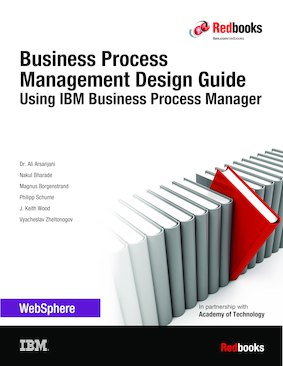Abstract
IBM® Business Process Manager (IBM BPM) is a comprehensive business process management (BPM) suite that provides visibility and management of your business processes. IBM BPM supports the whole BPM lifecycle approach:
- Discover and document
- Plan
- Implement
- Deploy
- Manage
- Optimize
IBM BPM excels in integrating role-based process design, and provides a social BPM experience. It enables asset sharing and creating versions through its Process Center. The Process Center acts as a unified repository, making it possible to manage changes to the business processes with confidence.
IBM BPM supports a wide range of standards for process modeling and exchange. Built-in analytics and search capabilities help to further improve and optimize the business processes.
This IBM Redbooks® publication provides valuable information for project teams and business people that are involved in projects using IBM BPM. It describes the important design decisions that you face as a team. These decisions invariably have an effect on the success of your project.
These decisions range from the more business-centric decisions, such as which should be your first process, to the more technical decisions, such as solution analysis and architectural considerations.
Table of Contents
Chapter 1. Introduction to successful business process management
Chapter 2. Approaches and process discovery
Chapter 3. Solution analysis and architecture considerations
Chapter 4. Security architecture considerations
Chapter 5. Design considerations and patterns
Chapter 6. Business-centric visibility
Chapter 7. Performance and IT-centric visibility
